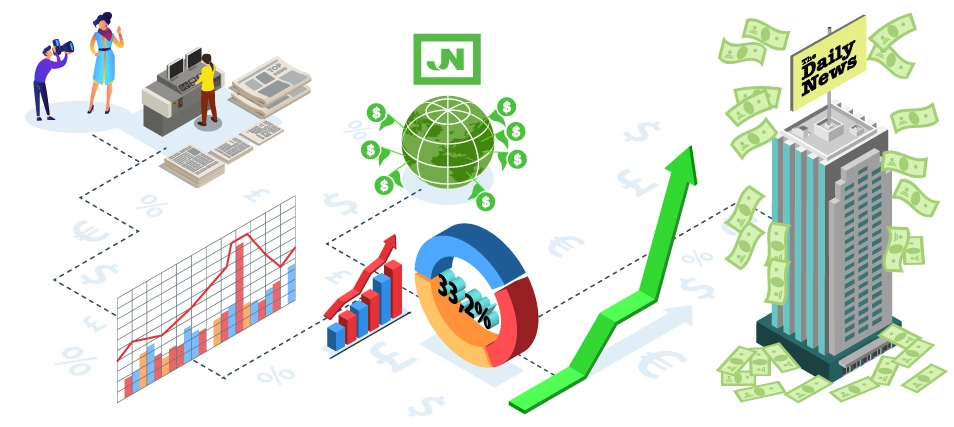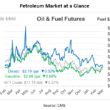In the 20th century heyday of magazines, international licensing was a significant contributor to the profits of many publishers, especially in the US and UK. It made small companies into larger ones and swelled the profits even of the largest publishers.
It probably all began with Condé Nast which had launched international editions of Vogue from 1910. But its New York-based rival Hearst made the business its own, licensing more than 300 magazines generating hundreds of millions of dollars of revenue annually. Cosmopolitan alone had more than 50 international editions, published by leading publishers in many of the world’s media markets.
In the UK, Future (then a relatively small specialist interest publisher with a burgeoning export division) caught onto the trend by licensing editions of magazines such as T3, PC Gamer and the Official Sony PlayStation Magazine. At a time when Loaded and, then, FHM were taking the pre-digital men’s magazine market by storm in the US and UK, Dennis Publishing’s Maxim became the world leader with 35 licensed editions.
Typically, companies like Hearst, Dennis and Future charged a monthly fee and also a revenue-linked royalty of 5-10%. With operating margins typically over 70%, licensing revenues made a disproportionately high contribution to the profits of these licensors.
Newspapers have long enjoyed licensing revenues especially from specialist content and contributors and they operate in a world dominated by news agencies – and photo archives – selling content all over the world. Many dailies increasingly see the potential of licensing their content, especially to the myriad of digital news startups.
But the success of magazine licensing had been based on the simple fact that it enabled licensee publishers around the world to create large-scale “global but local” brands at relatively low-cost – and low-risk. What appealed to licensees was the global (or at least supranational) brand, the content, and also the overall publishing expertise of the licensor. For large magazines like Cosmopolitan, Elle, or Vogue, the brand was almost everything and gave local publishers ready access to advertisers already supporting it in other territories. But, for specialist magazines – funded more by readership than advertising – the prize for licensees was the high-value content.
That was what turned the wheels of the international magazine market until the early years of this century when circulation and advertising revenue was shredded by the web. Suddenly, the business shrank and with it the appetite of local publishers to invest in launching stand-alone media properties with lengthy contractual commitments to monthly royalty payments.
But, although advertising has been sharply reduced, the value of magazine and newspaper content has – if anything – increased for publishers, including as ‘content marketing’ for websites of all kinds. In that sense, the market for journalistic content has never been larger. But, for most publishers, the primary target remains companies like themselves in other countries: high-value content can be the key to enabling them to charge readers for online access. But it’s now a world where, inevitably, would-be licensee publishers are interested in ‘pick and mix’ buying of individual pieces of content rather than the former licensing practice of paying for everything produced by an individual magazine brand whether they used it or not.
Many publishers have been wondering how (and whether) they could get back to a world where their journalism can be easily bought and sold. And, while a market of sorts has developed with agencies offering publishers the ability to buy individual pieces of content, they have remained wedded to the old financial model of charging monthly subscriptions; demand has moved on, but the pricing has remained entrenched.
Until now.
Publishers are starting to be be captivated by the Berlin-based Journexx, self-described as “the digital marketplace for journalistic content”. Put simply, the startup is a dynamic content trading platform where magazine, newspaper and digital articles can be bought and sold at a price that changes in realtime, according to demand and newsworthiness. This mechanism allows not only for content prices to peak, say, with hot celebrities or big news but also with the seasons. Health-related content may be less in demand in the Northern winter months of November-December (when it’s the holiday season) than in January-February when people are thinking about their lifestyles. Journexx charges per article but its dynamic pricing will also vary according to the territory where it is sold. For example, a Swiss publisher may be charged more than a Nigerian publisher for the same piece of content and its price in both markets will respond to the levels of interest.
There hasn’t previously been a mechanism in place to automatically price the content, and this is what Journexx now does. The platform allows newspapers, magazine and online publishers from all over the world to offer their content on a global marketplace: Journexx is like a commodity exchange for quality content.

Journexx COO and co-founder Franko Melisch says: “The current business model for most newspaper and magazine publishers is working mainly in a local / national environment. It’s as if books had never been translated and published in other markets. But we know there is interest in reading great stories, no matter where they come from. If you have published a great story, you should not be confined to your own distribution region; you should be able to sell it everywhere. It works the other way round too, of course. Before producing every article over and over again, why not buy an existing one for a certain topic e.g, from a science magazine in another country? Journexx creates a benefit on both sides of the market.”
Journexx claims to make it easy and convenient to sell content to other publishers through the platform which also: provides data about current content trends, offers automatic translation, and calculates the ‘market price’ for every article in the database.
Richard Bean, the former director of international licensing operations successively for Future, Dennis Publishing and Hearst – and now a consultant to Journexx – said this week: “Journalism is the only commodity that doesn’t have a market price. Publishers should start to understand the value of their content as a commodity – the Journexx platform shows them its value in real-time, across multiple territories.”
Melisch adds: “By using Journexx, publishers will start to understand the market value of their content as a commodity, as something to be exchanged and traded. Demand changes, as in all markets, and because our platform is trend-oriented, we can share that intelligence with our publishers.”
The appeal to content buyers and sellers alike is that the easy-access platform is free to use and charges commission only on sales, from 15% for content less than one month old and more for older content.
This is what the new system offers to publishers:
- Smart database: Provides buyers and sellers with matching requirements and search ranking.
- Automatic translations: Content automatically translated into English by AI as a preview. Extensions to Spanish, French and other languages are planned.
- Dynamic pricing: The algorithm sets the value for each article on a daily basis driven by topic trends across the web and social media.
- Licensing: The buyer gets a unique right to publish the content in his region for a limited time.
The service is in beta and is already being used by 50 publishers. Its potential may be gauged by estimates that some 5-10% of all articles produced by publishers worldwide are also relevant to other markets, meaning that, perhaps, up to 100mn pieces of relevant, new content are being published globally every year which can be traded beyond their original use.
Journexx – which estimates the worldwide market for publishers from licensing and content partnerships to be worth some $7.5bn – is initially targeting the $20mn potentially earned by 19,800 news and magazine publishers in Europe, US, UK, and South America.
The company was founded last year as part of the MediaTech Hub Accelerator backed by the University of Potsdam, the Film University Babelsberg Konrad Wolf and the Hasso-Plattner-Institute.
Publishers, news agencies and content providers wishing to explore the potential of the Journexx platform to deliver new revenue should email: contact@journexx.com




